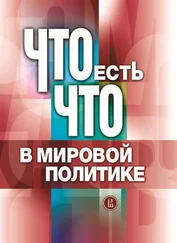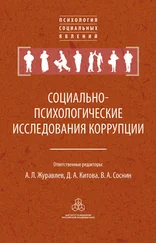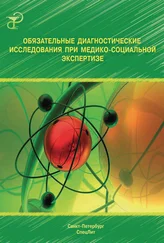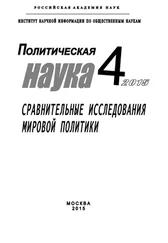Theissen and Winter, Kriterienfrage , с. 145–171.
См. также: T. Holmén, «Doubts about Double Dissimilarity: Restructuring the Main Criterion on Jesus-of-History Research», в кн.: Authenticating the Words of Jesus (ed. B. Chilton and C. A. Evans; NTTS 28/1; Leiden: Brill, 1999), с. 47–80.
Theissen and Winter, Kriterienfrage , с. 171, 173. См. также герменевтические размышления: Gerbern S. Oegema, Für Israel und die Völker: Studien zum alttestamentlich-jüdischen Hintergrund der paulinischen Theologie (NovTSup 95; Leiden: Brill, 1998), с. 1–32, 253–279.
Theissen and Winter, Kriterienfrage , с. 175.
Там же, с. 192.
Там же, с. 194. См. также: B. Witherington III, The Jesus Quest: The Third Search for the Jew of Nazareth (Downers Grove, Ill.: InterVarsity Press, 1995), с. 42–92.
В качестве второстепенных рассматриваются также следующие темы: 4) ученики Иисуса (Гнилка); 5) народ Божий (Гнилка); 6) чудеса Иисуса (Швейцер); 7) призыв к покаянию (Браун); 8) авторитет Иисуса (Браун); 9) образ Бога (Бультман); 10) воля Бога (Бультман). Полную библиографию по учению Иисуса см. в кн.: Evans, Life of Jesus Research , с. 147–194.
Принято считать, что для воссоздания учения Иисуса имеют значение лишь те его слова, что соответствуют критерию двойного несходства. Этот критерий применяется к логиям, выражающим представление Иисуса о самом себе, к большей части притч в их допасхальной форме и к апофегмам, типичным для развития раннехристианской общины, однако не к тем логиям, что могли появиться только после Пасхи, поскольку включают в себя христологические или экклесиологические суждения.
См.: M. de Jonge, Christology in Context: The Earliest Christian Response to Jesus (Philadelphia: Westminster, 1988); idem, Jesus: The Servant-Messiah (New Haven: Yale University Press, 1991); idem, Jezus als Messias: Hoe hij zijn zending zag (Boxtel: Katholieke Bijbelstichting, 1990).
См. также: J. D. G. Dunn, «Can the Third Quest Hope to Succeed?»; ср.: E. E. Ellis, «The Synoptic Gospels and History», в кн.: Authenticating the Activities, ed. Chilton and Evans, с. 31–48 и с. 49–57.
G. Vermes, Jesus the Jew: A Historian’s Reading of the Gospels (Minneapolis: Fortress, 1973), с. 19–41.
См. также: G. S. Oegema, Der Gesalbte und sein Volk: Untersuchungen zum Konzeptualisierungsprozess der messianischen Erwartungen von den Makkabäern bis Bar Koziba (SIJD 2; Göttingen: Vandenhoeck & Ruprecht, 1994), с. 19–20; idem, «Der vorchristliche Paulus», в кн.: Israel , с. 33–56.
L. M. McDonald, The Biblical Canon: Its Origin, Transmission, and Authority (Peabody, Mass.: Hendrickson, 2007), с. 190–223.
См.: Юб 2:23–24. Иосиф Флавий говорит о числе книг, но не приводит их названий.
См. 3 Ездр 14:22–48; вав. Б. Бат 14b–15a, и др.
Т. е. 24 за вычетом Книги Даниила.
См.: McDonald, Canon, с. 150–189.
См. там же, с. 195, прим. 8; а также: R. T. France, Jesus and the Old Testament: His Application of Old Testament Passages to Himself and His Mission (London: Tyndale, 1971), с. 259–263.
D. C. Allison, The Intertextual Jesus: Scripture in Q (Harrisburg: Trinity Press International, 2000).
См.: McDonald, Canon , приложение D, основанное на NA27; Craig A. Evans, Ancient Texts for New Testament Studies: A Guide to the Background Literature (Peabody, Mass.: Hendrickson, 2005), прил. 2, с. 342–409.
О Писаниях в древнем иудаизме в целом и в частности о том, как Иисус обращался к священным текстам, см.: S. E. Porter, ed., Hearing the Old Testament in the New Testament (MNTS; Grand Rapids: Eerdmans, 2006); B. D. Chilton, «Jesus and Israel’s Scriptures», в кн.: Studying the Historical Jesus, ed. Chilton and Evans, с. 281–335; T. Holmén, Jesus and Jewish Covenant Thinking (BInS 55; Leiden: Brill, 2001); L. M. McDonald, «The First Testament: Its Origin, Adaptability, and Stability», в кн.: The Quest for Context and Meaning: Studies in Biblical Intertextuality in Honor of James A. Sanders (ed. C. Evans and S. Talmon; BInS 28; Leiden: Brill, 1997), с. 287–326; см. также: Allison, Intertextual Jesus; B. D. Chilton, A Galilean Rabbi and His Bible: Jesus’ Use of the Interpreted Scripture of His Time (GNS 8;Wilmington, Del.: Glazier, 1984); C. A. Evans and J. A. Sanders, eds., Function of Scripture in Early Jewish and Christian Tradition (JSNTSup 154; Sheffield: Sheffield Academic Press, 1998); C. A. Evans and James A. Sanders, Luke and Scripture: The Function of Sacred Tradition in Luke-Acts (Minneapolis: Fortress, 1993); C. A. Evans, «The Scriptures of Jesus and His Earliest Followers», в кн.: The Canon Debate (ed. L. M. McDonald and J. A. Sanders; Peabody, Mass.: Hendrickson, 2002), с. 185–195; E. B. Powery, Jesus Reads Scripture: The Function of Jesus’ Use of Scripture in the Synoptic Gospels (BInS 63; Leiden: Brill, 2003); A. Segal, «Jesus in the Eyes of One Jewish Scholar», в кн.: The Historical Jesus through Catholic and Jewish Eyes (ed. L. Greenspoon, D. Hamm, and B. F. LeBeau; Harrisburg: Trinity Press International, 2000), с. 147–154; S. White Crawford, «The Fluid Bible: The Blurry Line between Biblical and Nonbiblical Texts», BRev 15.3 (1999): 34–39, 50–51.
Оба автора, говоря о том, как Иисус цитировал Писание, выделяют четыре типа: 1) цитирование в согласии со смыслом и контекстом Еврейской Библии; 2) открытое цитирование с выбором определенной версии отрывка; 3) использование библейского выражения в его древней версии; и 4) использование библейской темы.
B. D. Chilton and C. Evans, «Jesus and Israel’s Scriptures», в кн.: Studying the Historical Jesus, ed. Chilton and Evans, с. 281–335. См. также: Rimon Kasher, «The Interpretation of Scripture in Rabbinic Literature», в кн.: Mikra: Text, Translation, Reading, and Interpretation of the Hebrew Bible in Ancient Judaism and Early Christianity (ed. M. J. Mulder and H. Sysling; CRINT 1/1; Philadelphia: Fortress, 1988; repr., Peabody, Mass.: Hendrickson, 2004), с. 547–594.
Читать дальше
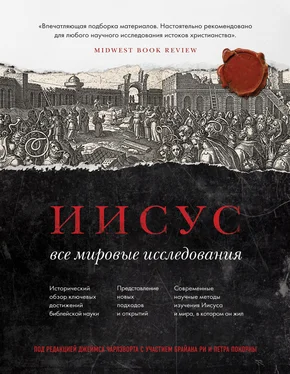
![Коллектив авторов - Что мы думаем о машинах, которые думают [Ведущие мировые ученые об искусственном интеллекте]](/books/31211/kollektiv-avtorov-chto-my-dumaem-o-mashinah-kotorye-thumb.webp)
